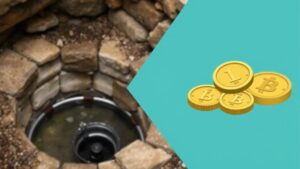Using Historical Survey Maps to Verify Treasure Map Landmarks
Using Historical Survey Maps to Verify Treasure Map Landmarks
The quest for hidden treasure has fascinated adventurers and historians alike for centuries. Indeed, treasure maps–often perceived as whimsical artifacts from pirate folklore–can hold substantial historical value. But, to accurately locate the supposed riches of yore, one must employ rigorous methods. This article explores the use of historical survey maps as a verifiable tool for confirming the geographical features and landmarks referenced in treasure maps. By analyzing their historical context, accuracy, and applicability, treasure hunters can enhance their chances of successful treasure recovery.
The Importance of Historical Survey Maps
Historical survey maps are pivotal resources that provide a snapshot of the geographical and political landscape of a given period. Often created by government agencies or surveyors, these maps reflect important information such as property lines, roads, topographical features, and even the locations of structures. r accuracy varies by the time of creation and the methods employed, but they are invaluable in cross-referencing with other historical documents.
For example, a notable example is the 19th-century U.S. General Land Office maps, which catalogued lands in the United States, detailing features that might also appear in treasure maps. Analyzing these maps allows treasure hunters to validate the landmarks mentioned in their treasure maps, such as rivers, mountains, and even old settlements that might have housed buried artifacts.
Methodologies for Verification
When verifying treasure maps with historical survey maps, a systematic approach ensures that findings are accurate and reliable. Here are essential steps to follow:
- Identifying Key Landmarks: The first step involves pinpointing landmarks indicated on the treasure map. This may include natural features like rivers or hills, as well as man-made structures such as old buildings or roads.
- Researching Historical Context: Understanding the historical context in which the treasure map was created provides insight. Investigating the eras geography, politics, and settlements will help in contextualizing the treasure maps landmarks.
- Cross-Referencing Maps: By overlaying the treasure map with the historical survey map, one can evaluate similarities in landmark representation. Techniques such as GIS technology can be especially useful in aligning maps accurately.
- Conducting Field Surveys: Once potential landmarks are verified, conducting a physical survey can further confirm their presence and relevance. This list could involve visual observations or even expert guidance to assess the site accurately.
Case Studies: Successful Verification
The relationship between treasure maps and historical survey maps is not merely theoretical; historical accounts provide concrete examples of successful treasure verifications. One notable case is the discovery of the San Miguel, a Spanish galleon rumored to have sunk off the coast of Florida in the 18th century. Researchers utilized Spanish colonial survey maps to locate the intended trading routes and potential locations for shipwrecks.
Similarly, the legendary treasure of Captain Kidd, believed to be buried near the shores of New York, was partially verified through a series of historical maps detailing 17th-century coastal features. By matching specific landmarks with documented locations on survey maps, treasure hunters were able to scour specific area regions with targeted searches.
Limitations and Considerations
While the use of historical survey maps in verifying treasure map landmarks holds significant promise, several limitations must be noted:
- Scale and Accuracy: Historical maps may vary in scale and accuracy. Errors in distance or landmark representation can lead to false precision, complicating the verification process.
- Changes Over Time: Natural landscape changes, human development, and alterations in property lines can obscure or erase the features originally noted on historical maps.
- Legal and Ethical Aspects: Treasure hunting can intersect with legal concerns such as land ownership and archaeological preservation. Its essential that treasure hunters consider local laws and ethics before embarking on searches.
Conclusion: Practical Applications for Treasure Hunters
Employing historical survey maps as tools for verifying treasure map landmarks provides a structured approach to treasure hunting that combines historical research with practical application. As demonstrated through various case studies, treasure hunters who engage with these maps can significantly increase the likelihood of their treasure-finding endeavors. But, they must also be aware of the potential limitations and ethical concerns that lie ahead.
Actionable Takeaway: To optimize your treasure hunting efforts, start by sourcing historical survey maps relevant to your area of interest. Investigate local archives, libraries, or online databases that offer access to these maps. By employing a meticulous methodology for cross-referencing and validating landmarks, you will be better equipped for successful treasure discoveries.



